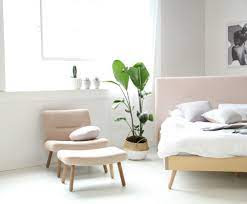Tips and tricks of how to care for timber furniture
Timber furniture is wood in its most natural form. Hence, every piece of timber furniture is different and unique. Unlike plywood, which is thin slices of wood melded together in a factory, timber furniture uses pieces cut straight from the tree. The uniqueness of each cut comes from the variation in mineral streaks, grain variations and other natural markers. Timber is natural, and some tips will be valuable to know for proper timber furniture care.
As we know timber comes directly from nature and don’t go through a factory before reaching a consumer’s home, it keeps a higher level of moisture than other pieces of wood. The timber contains humidity levels as high as 50%. Then it has been dried to reduce the humidity level to one that will allow the furniture to accustom to the humidity of a home. If you have timber bedroom furniture or timber doors in the house, you have noticed that the door expands, making it hard to shut, during periods of high humidity. Moreover, extremely dry periods will cause the timber’s humidity levels to disappear, making it shrink in size. To prevent changes in the size of the timber, try to maintain stables levels of humidity throughout the house.
Timber Furniture Care
As with all wood furniture, avoid putting your timber furniture in the direct sunlight. The UV rays from the sun can damage your furniture, it can also dry out the lacquer on the timber, causing it to track and even fade. If you’re investing in furniture then invest in UV-resistant window film that will block 99.9% of the rays. Likewise, placing the timber furniture near an air-conditioning can also dry your furniture, cause unsightly cracks in the surface and even twist the appearance. The timber contains a natural humidity that requires the wood to be able to breathe, it’s important to occasionally move around knick-knacks on top of the furniture. This allows those spots, previously covered by, say, a lamp, to interact with the surrounding atmosphere. If left for too long, heavy objects like bowls, vases and lamps can leave an imprint in the timber which you don’t want. Another way to protect your furniture from unwanted dents is by putting felt pads underneath heavy objects. If your own timber furniture is more than just decoration, there are few things you need to know about timber furniture care. Primarily, you’ve to know what types of finish has been applied to the furniture. Many of the timber furniture is finished with oil and not absorbed properly and also not protect as much against heat or liquid. IF your timber furniture is finished with oil, we would suggest you buying a polyurethane finish to apply to it. Polyurethane finishes are thick enough that they will fill the grain of the timber and protect the surfaces from stains, scratches and spills.
Protecting Timber Furniture
Timber keep marks relatively easily, so if you plan on writing on its surface, first place down a protective hurdle. This will stop the transfer of whatever you may be writing onto the surface of the wood. If you’re using timber dining furniture, it’s important to use a plate for both hot and cold drinks.
With all timber furniture, often dusting and cleaning is necessary as it will protect it from dust particles. Wipe with a cotton cloth across the surface of the furniture will easily pick up dust particles while deactivating any static that could attract dust in the future. Don’t use too much water and make sure you wipe with a dry cloth when you’re finished. Semi polishing and waxing will help the furniture to stay longer and any surface scrapes and restore the finish’s shine. If the furniture damage, it’s best to call an experienced technician.
Source URL: https://www.mubuhome.com.au/



Comments
Post a Comment